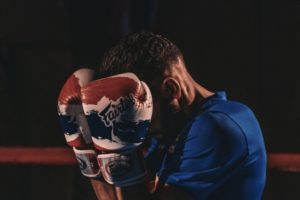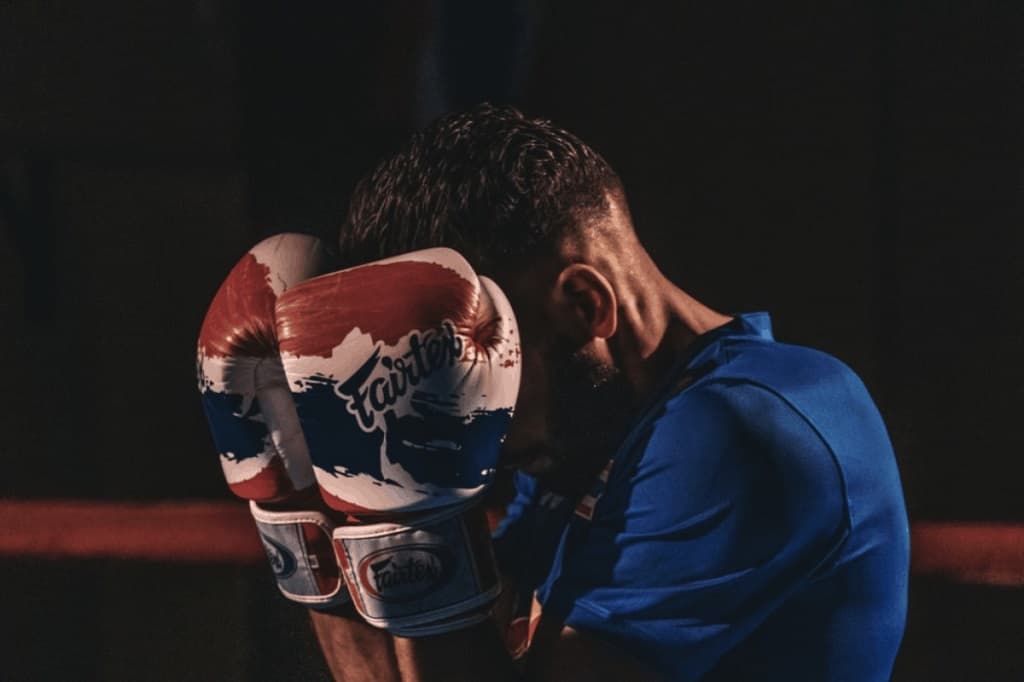 Hello again fellow Warriors! Welcome to another post where we talk boxing!
Hello again fellow Warriors! Welcome to another post where we talk boxing!
While doing my research about the sport and experiencing it for myself, I learned that one of the key components to good boxing technique is your stance. Your stance is supposed to keep you stable, protect yourself from your opponent’s punches, and be ready to strike with your own punches.
But have you ever wondered what a proper boxing stance looks like? And which stance is the best one to be in? While I was doing my research, I learned this:
There are many different kinds of stances in Boxing, with each one having its pros and cons. Some stances may be more effective for keeping you protected, but they end up sacrificing punch power. Other stances are the other way around, where your punches can unleash overwhelming power, but your defense will be decreased, increasing your chances of getting punched.
Here are the different types of stances:
- BASIC STANCE
- ORTHODOX STANCE
- SOUTHPAW STANCE
- WIDE STANCE
- SIDEWAYS STANCE
- SQUARED STANCE
- CROUCHING STANCE
First, I’ll explain the stance I learned from my trainer, and then I’ll show some more stances I learned about. (Note: I am a beginner with a passion for the sport and I am learning a lot.)
Basic Stance
The basic stance is the stance I learned from my trainer at Title Boxing, and it is a self-explanatory position.
- Feet about shoulder width apart, weight on the balls of your feet
- Place your lead toes in line with your rear heel
- Upper body turned in the direction of your dominant hand at a 45-degree angle
- Hands up in front of your face at about eye level, with your weak hand in front, and your dominant hand behind
- Knees slightly bent, making sure the knees don’t go over the toes
- Stand upright, do not lean forward or back
- Engage your core
Other Stances
There are other stances as well, according to The Ultimate Guide to Boxing Stances by Fight Camp, and Dimitar Ivanov from The Best Boxing Stance and Guard for Beginners (+5 Advanced) by ShortBoxing. They all have their advantages and disadvantages, so read on so you can find out which stance will work best for you.
- ORTHODOX
- SOUTHPAW
- WIDE
- SIDEWAYS
- SQUARED
- CROUCHING
Orthodox Stance
An orthodox stance is a variant of the basic stance that is used by right-handed boxers. This is the stance that I use, as I am right-handed myself.
- Feet about shoulder width apart, weight on the balls of your feet
- Place your left (leading) toes in line with your right (rear) heel
- Upper body turned 45 degrees to your right
- Left hand in front, your right hand behind
- Knees slightly bent, making sure the knees don’t go over the toes
- Stand upright, do not lean forward or back
- Engage your core
Southpaw Stance
A southpaw stance is another variant of the basic stance that is used by left-handed boxers. It’s the same as an orthodox stance, only the positioning of everything is reversed over to your left side.
- Feet about shoulder width apart, weight on the balls of your feet
- Your right (lead) toes should be in line with your left (rear) heel
- Turn your upper body 45 degrees to your left
- Right hand in front, left hand behind
- Knees slightly bent, making sure the knees don’t go over the toes
- Stand upright without leaning forward or back
- Engage your core
The Orthodox and Southpaw stances are the stances you tend to see the most in boxing matches, since they’re the easiest stances to execute. Some boxers get a little creative with them, but only when their skills are more advanced. If you’re a beginner, stick with the basic stances first. Once you get a little more experienced, you can bend the rules a little bit to make it more comfortable for you.
Wide Stance
A wide stance is where your feet are spread out farther apart, with the knees bent a little more, almost in a squat position. According to the Shortboxing blog, this stance is effective for boxers who are more power-oriented and like using counters.
- Feet wider than shoulder width apart (keep your feet planted, or flat-footed, for this stance)
- Still keep your leading toes in line with your rear heel
- Bend your knees more, enough to where you can keep your balance
- Weak hand in front, dominant hand behind
- Remember to keep your core engaged keep standing upright!
With this stance, even though your punches will be stronger and more powerful, you won’t be as agile and you won’t have as far of a reach. So if you’re going to implement this stance, I recommend fighting at close range, since your reach will be limited. Remember to not let your knees go over your toes.
Sideways Stance
A sideways stance is where your upper body is facing the side of your dominant hand at a near 90-degree angle. According to Shortboxing, the sideways stance is more common in Martial Arts such as Karate and Taekwondo. However, it has its place in boxing.
The sideways stance has just about the opposite effects as the wide stance. You’ll be sacrificing punching power for agility and self-defense. However, it can get discomforting for your neck to be turned to the side for too long. With that in mind, I recommend you don’t stay in this stance for long periods of time. Change it up as the match progresses!
Squared Stance
A squared stance is where your entire body is facing directly towards your target. According to the Shortboxing blog, this stance is common in a Martial Art called Muay Thai. One of the positive attributes about this stance is that you can blow an equal amount of power in both fists when you punch.
Another plus about this stance is that you’ll be more agile. You’ll be able to move left or right around the ring more easily. However, the downside to this stance is you are making yourself a bigger target for your opponent, and it can be more difficult for you to keep your balance and to defend yourself. With your chest and face front and center, they’ll become more vulnerable to being punched.
Personally, I would save this stance for when you’re more advanced. Boxing is more about speed, brains, and self-defense rather than power and striking.
Crouching Stance
A crouching stance is exactly as it sounds, where you are in a crouching position. You lean slightly forward toward your opponent (but not too far forward, as that will leave you vulnerable to uppercuts) In the words of the Fight Camp blog, boxers who are shorter are better off using a crouching stance to fight. Professionals like Mike Tyson have used the stance as part of their fighting style in the ring.
If you are in this stance, you can land powerful punches onto your opponent and still keep yourself protected against him. Just remember to keep your balance and your core engaged at all times. (Weight on the balls of your feet and not your heels)
If you’re a shorter boxer, you would have an easier time with this stance than a taller boxer. If you’re taller, you might want to stick with using crouching as a defensive maneuver rather than using crouching as a normal stance. Using this stance if you’re taller could make you vulnerable to uppercuts if you’re not careful.
Next, I’m going to talk about how to implement different guards into your stance, as they’re also super important with your stance. So keep reading to learn more!
Guard
In boxing, your guard is where your hands are in position to throw punches onto your target, and it is also your barrier between you and your opponent’s punches. It can protect you from getting KO’d by your opponent. With each stance, you have to have a guard to go hand in hand with it. Otherwise, you’ll make yourself an open target for your opponent.
Just like how there are multiple kinds of stances, there are all different kinds of guards that can be incorporated into each one of your stances that were discussed earlier. According to Shortboxing, here are the different kinds of guards:
Types of Guards
- BASIC
- HIGH
- PHILLY SHELL
- PEEK-A-BOO
- LOW LEAD-HAND
Basic Guard
A basic guard is where you have both hands up, protecting your face. The top of your knuckles should be just under your eyes. That way you can protect your face and still see what’s in front of you. Your elbows are tucked in to protect your chest, with your weak hand in front and your dominant hand behind. So for example, if you are an orthodox boxer, your left hand leads. If you are a southpaw boxer, your right hand leads.
In this position, your lead hand will act as a barrier to put some distance between you and your target. Body punches can only be blocked with your elbows in this position, as you don’t want to leave your face vulnerable for face punches.
High Guard
A high guard is where you have your hands high up, basically touching the temple of your head to protect your face. While this is a really good defensive position, it can limit your vision and how you can see your target. You’ll be sacrificing your vision for self-defense. So use this position at your own risk.
Philly Shell Guard
According to the Shortboxing blog, the Philly Shell guard is one of the best defensive positions you can put yourself in, as it will make it more difficult for your opponent to land punches onto you, especially if you’re in a sideways stance.
Dimitar Ivanov also recommends that you don’t use this position with an opponent in the opposite stance. For example, if you’re an orthodox boxer and your opponent is a southpaw, then you probably shouldn’t use this guard, as it will leave your body vulnerable to body shots. You would be better off if you save it for when your opponent has the same stance as you.
Peek-a-B00 Guard
The Peek-a-Boo guard was used by Mike Tyson during his fights. It works if you are a fighter who prefers to fight at close range instead of a distance. What you want to do is your hands at eye level, close to your face. Your knuckles should be facing outward, toward your target.
While this guard is really effective for landing close range punches onto your opponent, the downside of it is you might end up leaving your head and face vulnerable if you don’t learn how to implement proper head movement. Once you’re comfortable moving your head left or right to dodge punches to the face, then you can practice this guard.
Low Lead-Hand Guard
A low lead-hand guard is basically a position designed to get under your opponent’s skin and egg him on. It is supposed to trick your opponent into punching so you can counterpunch him.
But be careful! If you’re too slow to react to your opponent’s moves, you could end up leaving yourself wide open to getting a punch to your face. It’s all about speed, so it only works if you’re fast enough to dodge your opponent’s punch.
Closing Words
So by using the stances and guards together, and with a little bit of brains and wits, you’ll become a pretty hard guy to punch. Remember, while each stance and guard have their advantages, each one has their disadvantages too. You’ll be sacrificing one positive attribute for another with each stance and guard.
There really is no proper stance or proper guard. There’s your way, and then there’s the wrong way. It really is about picking what works best for you, because no two boxers are built exactly alike. But remember, with each stance and guard, for them to work the way you want them to, you have to do them correctly.
In the comments below, share which boxing stance works best for you!

